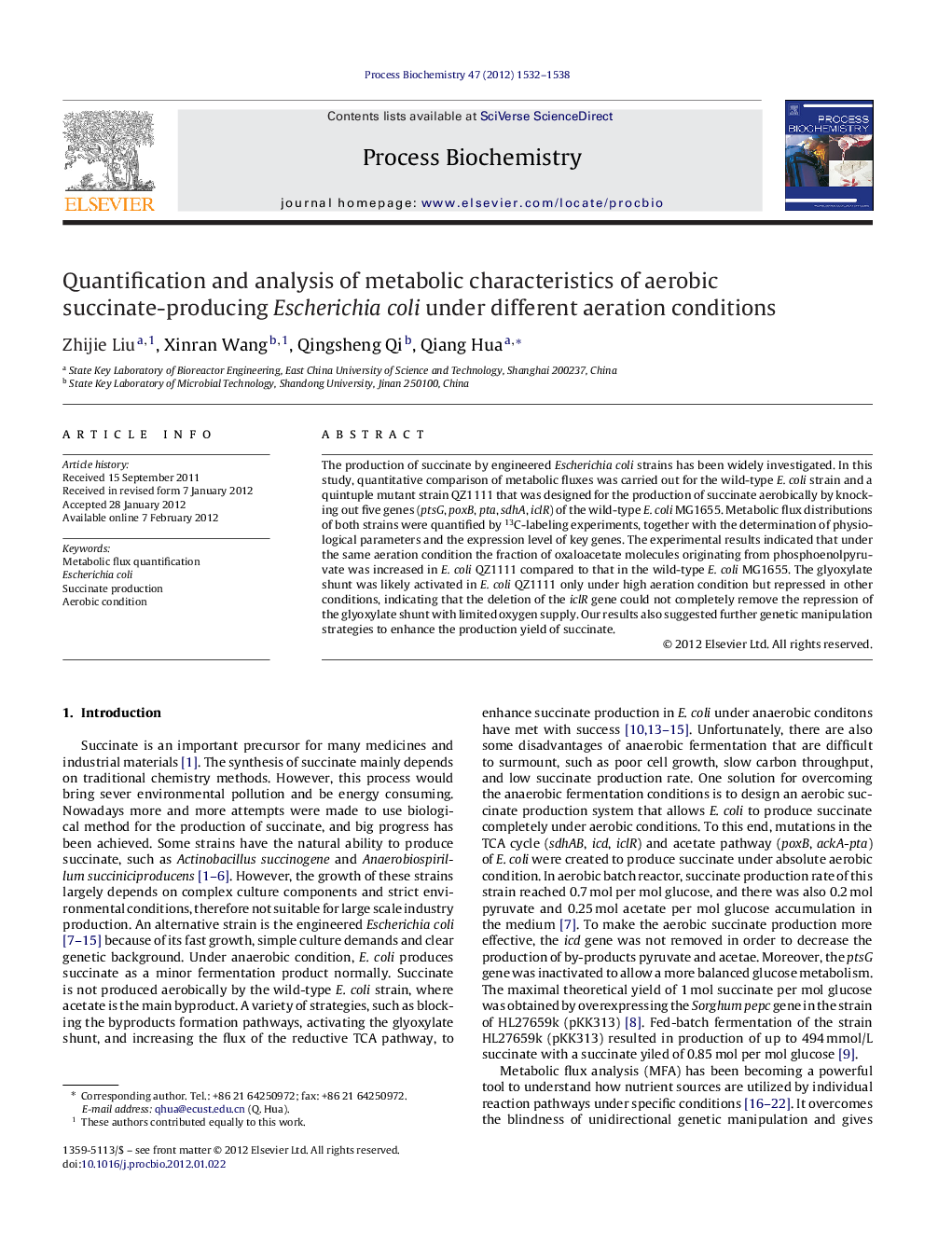| Article ID | Journal | Published Year | Pages | File Type |
|---|---|---|---|---|
| 34757 | Process Biochemistry | 2012 | 7 Pages |
The production of succinate by engineered Escherichia coli strains has been widely investigated. In this study, quantitative comparison of metabolic fluxes was carried out for the wild-type E. coli strain and a quintuple mutant strain QZ1111 that was designed for the production of succinate aerobically by knocking out five genes (ptsG, poxB, pta, sdhA, iclR) of the wild-type E. coli MG1655. Metabolic flux distributions of both strains were quantified by 13C-labeling experiments, together with the determination of physiological parameters and the expression level of key genes. The experimental results indicated that under the same aeration condition the fraction of oxaloacetate molecules originating from phosphoenolpyruvate was increased in E. coli QZ1111 compared to that in the wild-type E. coli MG1655. The glyoxylate shunt was likely activated in E. coli QZ1111 only under high aeration condition but repressed in other conditions, indicating that the deletion of the iclR gene could not completely remove the repression of the glyoxylate shunt with limited oxygen supply. Our results also suggested further genetic manipulation strategies to enhance the production yield of succinate.
